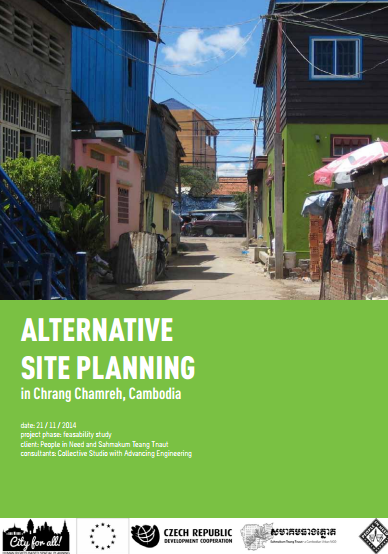
At Your Own Risk: Reprisals against Critics of World Bank Group Projects
Publication Year: 2015 / Sources: Human Rights WatchThis report describes how people in Cambodia, India, Uganda, Uzbekistan, and elsewhere have faced reprisals from governments and powerful companies for criticizing projects financed by the World Bank and the IFC. The World Bank’s own research has long found correlations between the extent and quality of public participation in projects and the success of development projects.
Download: English | Khmer
Conservation and Sustainable Development : Striking a Balance in Cambodia
Publication Year: 2014 / Sources: World Wide Fund For Nature Cambodia (WWF)A biological treasure trove, the Greater Mekong Region harbours some of the richest and most valuable habitats on Earth. However, it is now under serious threat. Large-scale hydropower projects, rampant development, climate change, the illegal wildlife trade and deforestation are challenging the region’s outstanding biodiversity and its ability to support 300 million people who depend on its natural resources.
Download: English | Khmer
Building Disaster Resilient Communities in Cambodia II
Publication Year: 2015 / Sources: ActionAid, DanChurchAid/ChristianAid (DCA/CA), Oxfam, People in Need (PIN), Save the ChildrenAbout 80% of Cambodian territory lies within the Mekong basin, known to have large fluctuations of water levels between the dry and wet seasons. This causes an annual cycle of droughts and floods, damaging agricultural production and livelihoods and constraining development and poverty alleviation. The 2014 World Risk Report puts Cambodia as the ninth most at risk country in the world.
Download: English | Khmer
Avoiding Forced Eviction: A Community Guide to Negotiation and Advocacy
Publication Year: 2014 / Sources: Equitable Cambodia and Inclusive Development InternationalThis guide aims to help communities develop “interest-based” negotiation skills and understand how to use a range of tools to deal with the power imbalance between them and those trying to take their housing, land and resources. It may be useful to communities threatened with eviction, as long as the other party is willing to negotiate.
Download: English | Khmer
Hazard Mapping in Cambodia
Publication Year: 2013 / Sources: People in NeedCambodia is a country which is susceptible to numerous ongoing hazards. Considered one of the most disaster prone countries in South East Asia and ranked in the top ten countries most at risk of a disaster (Alliance Development Works, 2013), its risks include annual hydrological events such as monsoon rains, flooding, and droughts. More recent changes in land use and mass urbanization, along with the underdevelopment of systematic water resource management practices and facilities, have led to a hazard rich environment.
Download: English | Khmer
Large-Scale Land Grabbing in Cambodia: Failure of International and National Policies to Secure the Indigenous Peoples’ Rights to Access Land and Resources
Publication Year: 2015 / Sources: Heinrich Böll FoundationSince the 1990s, the Cambodian state has attempted to encourage economic development in rural areas through a system of “Economic Land Concessions” (ELCs) in the agroindustry, the mining sector and tourism– both foreign and domestic – over hundreds of thousands of hectares in the country. This development pattern has been especially critical in indigenous upland regions, including the northeast, where less intensive land-use patterns prevail and natural resources are commonly seen as underutilized.
Download: English | Khmer
Conversion Timber, Forest Monitoring, and Land-Use Governance in Cambodia
Publication Year: 2015 / Sources: Forest TrendsIn Cambodia, timber concessions for selective logging under forest management plans were effectively suspended indefinitely due to governance and complicance issues. However, Cambodia’s exports of value timber have continued, raising the question where this timber comes from if not from official forest concessions. Extensive media, civil society, United Nations, and technical reports indicate that the main source of wood harvested in Cambodia since mid-2004 consists of 1) “conversion timber” from forest lands allocated to large-scale agri-industrial plantations, and 2) illegally harvested timber from adjacent lands.
Download: English | Khmer
Alternative Site Planning in Phnom Penh
Publication Year: 2014 / Sources: People in Need and Sahmakum Teang TnautSahmakum Teang Tnaut (STT) identified four villages within Sangkat Chrang Chamreh Muoy, Phnom Penh, as being in threat of eviction due to the proposed expansion of highway no 5. People in Need & STT engaged the architecture practice, Collective Studio to propose alternative re-development options for these villages. The objective was to avoid re-location and offer an on-site solution acceptable to residents, local authorities and other stakeholders.
Download: English | Khmer
The Exclusion Of Urban Poor Communities From Systematic Land Registration In Phnom Penh
Publication Year: 2015 / Sources: The NGO Forum on CambodiaFor many Cambodians without a formal title to the property where they may have settled years ago, security of tenure remains a great concern. In 2001, a new Land Law was passed and the Royal Government of Cambodia (RGC) has been working to rebuild the formal framework of land ownership and develop land administration infrastructure.
Download: English | Khmer
A Human Rights Approach to Development of Cambodia’s Land Sector
Publication Year: 2012 / Sources: Bridges Across Borders Cambodia / Equitable Cambodia and Heinrich Böll Sti!ung CambodiaDespite the tens of millions of dollars in aid and concessional loans being spent in Cambodia with the ostensible aim of securing land tenure and making the management of land and natural resources more equitable and sustainable, the evidence shows that tenure insecurity, forced evictions and large-scale land grabbing are escalating to alarming
levels. Against this backdrop this discussion paper proposes a better approach to development interventions in the land sector.
